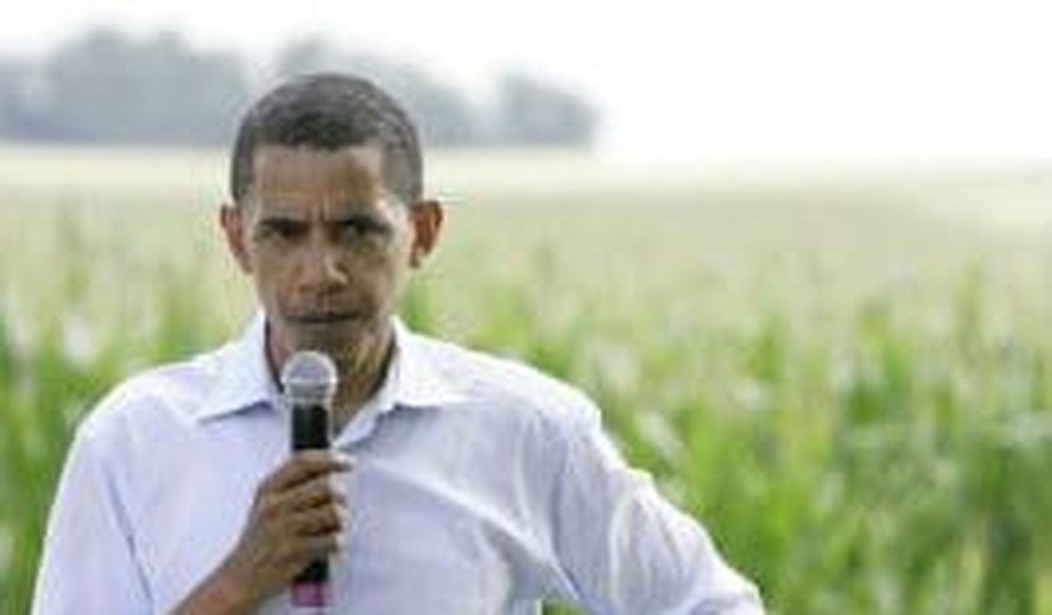WASHINGTON — President Obama enacted part of his promised Climate Action Plan today with the creation of regional “Climate Hubs” to coordinate a global warming response with farmers, ranchers and owners of forest land.
Agriculture Secretary Tom Vilsack said the seven Regional Hubs for Risk Adaptation and Mitigation to Climate Change “are going to do a risk analysis of crop production and of forestry, in terms of changing climates.”
“It will establish the vulnerabilities that we have in each region of the country. We’ll determine from those vulnerabilities strategies and technologies and steps that can be taken to mitigate the impacts and effects of climate change, as well as adapting to new ways of agriculture,” Vilsack told reporters today at the White House daily briefing. “It will take full advantage of the partnerships that we have with land grant universities, our sister federal agencies, as well as the private and nonprofit sector. And every five years, these climate hubs will be reviewed.”
The USDA, which is overseeing the hubs, said the program is part of Obama’s State of the Union promise “to responsibly cut carbon pollution, slow the effects of climate change and put America on track to a cleaner environment.”
The hubs will be located at the National Laboratory for Agriculture and the Environment, Agricultural Research Service, Ames, Iowa; Northern Research Station, Forest Service, Durham, N.H.; Southern Research Station, Forest Service, Raleigh N.C.; National Resources Center, Agricultural Research Service, Fort Collins, Colo.; Grazinglands Research Lab, Agricultural Research Service, El Reno, Okla.; Pacific Northwest Research Station, Forest Service, Corvallis, Ore.; and Rangeland Management Unit/Jornada Experimental Range, Agricultural Research Service, Las Cruces, N.M. Substations will be located in Houghton, Mich., Davis, Calif., and Puerto Rico.
“It may come as a surprise to you — it certainly did to me — that 51 percent of the entire land mass of the United States is engaged in either agriculture or forestry. This is a part of our economy that is significant: 16 million people are employed as a result of agriculture, and it represents roughly 5 percent of the gross domestic product,” Vilsack said, adding that recent severe snow storms and the persistent California drought are a “reflection of the changing weather patterns that will, indeed, impact and affect crop production, livestock production, as well as an expansion of pests and diseases and could compromise agriculture and forestry.”
“The president’s been quite insistent in cabinet meetings and in private meetings that he expects his cabinet to be forceful and to act. We can’t wait for congressional action. So pursuant to his Climate Action Plan, we established a number of climate change hubs.”
The USDA said the hubs will “deliver science-based knowledge and practical information to farmers, ranchers and forest landowners to support decision-making related to climate change across the country.”
The program is attributing everything from “fires, increases in invasive pests, droughts, and floods” to the effects of climate change.
“So combined with the new farm bill and the new opportunities it creates, these climate hubs, I think, will equip us to make sure that the 51 percent of the land mass of the United States is protected against changing climates, that allow us to maintain the economic opportunity that agriculture creates in this economy,” Vilsack said.
The Agriculture secretary said the new hubs will be utilizing existing avenues such as the Forest Service and “charging them with a new responsibility… do the assessments, and then identify technologies and practical science-based guidance that will say to farmers, to those who own forested areas, and to the government, this is how you need to manage.”
Vilsack’s examples of how that “management” might work included telling a farmer determined to be at risk from climate impacts “to either adapt and shift to a different crop that they’ve produced or use a different seed technology, biotechnology, whatever they might, to eliminate the risk, or if the risk is not something that can be eliminated, how we mitigate the impact of it.”
As an example of risk factors that will be assessed, he said better forecasting and climate-related disaster planning could have helped livestock producers in the Dakotas. “When that snowstorm hit, it didn’t wipe out just a few animals. It wiped out the entire operation. Nobody anticipated and expected that severe a storm, that early. That’s one impact,” he continued. “…When you take a look at the intensity of the storms that we have seen recently, and the frequency of them, the length of drought, combined with these snowstorms and the subzero weather that we’ve experienced, the combination of all those factors convinces me that the climate is changing, and it’s going to have its impact, and will have its impact, and is having its impact on agriculture and forestry.”
The USDA will be using $120 million already in their budget reserved for climate issues — but Vilsack couldn’t say how much the hubs will exceed that. “It’s difficult to assess precisely how much money will be spent, because it depends on what the risks are and how significant they are and what conservation programs will be used,” he said.
“But I can tell you that it will be a significant investment made in each region of the country, because of the importance of it.”









Join the conversation as a VIP Member